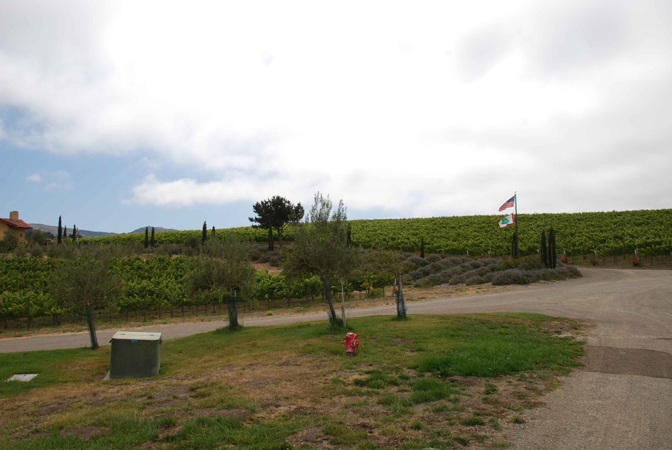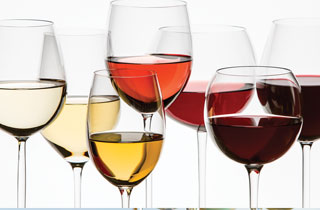Year in the Vineyard Week #10
Wes Hagen. Clos Pepe Vineyards
May 14-20, 2010
First, let me vent. I’m pissed. Really, really really angry right now. After teaching a five hour class called ‘Viticulture Bootcamp’ and having a great day of teaching and talking with folks from 21 States, Canada and Puerto Rico, I decided to finish my blog after the event. And the blog was great. It was descriptive and clever and lovely, and I clicked ‘Publish’ and the web-based software showed a loading bar for an entire hour. There was no pictures, no graphics, it was 1500 words of text. That’s it. Text. An hour? My Blackberry could have sent it in 2 minutes with 1 bar of connectivity.
So I checked the internet connection. I brought up YouTube and watched a video, I brought up ClosPepe.com and checked the front page, I updated my FaceBook. Everything worked fine, and with good connectivity. And still the Blog was stuck on loading. So I finally clicked refresh. Boom, all 1500 words were gone, an hour and a half of my life. An hour of loading and it wasn’t cached or saved ANYWHERE? I wish I could just tell of you wonderful people: the blog was great, but I won’t rewrite it. Trust me it was great. But I love all of you too much, so even after a tiring day, I’m going to write this damn thing again. On Microsoft Word. And save it. Maybe I’m just pissed at myself that I trusted a web-based application with my writing. I will suggest again that we change to a trustable blogging software. OK, enough with the frustration, let’s chat about the week in the vineyard.
I just had a drink and looked out the window and I’m feeling much better. I’m in the gorgeous confines of Stevenson, Washington at the third annual WineMaker Magazine Conference. Home winemakers and winegrowers are here from just about every state in the US, all here to taste each other’s wines, talk about growing and making wine and to make a temporary community. I’m always surprised just how easy it is to get to know and love these people—we all share the same passions, problems and mania—an attempt to make wine—it’s like trying to write a nove every year—a novel that may or may not be readable, but one that is made more for the experience of making it, in the hopes it will make people happy, or at least happily buzzed. We make wine for the sheer joy of the experience. It helps us appreciate every other wine we taste, whether it’s a commercial wine or a wine that we’ve bought or received as a gift. But I’m getting a little ahead of myself, let’s talk a moment about what happened in the vineyard last week.
Dateline: Lompoc, CA. It seems a world away from this rainforest surrounded by lakes and green and the Columbia River. But just yesterday I woke up in the Santa Rita Hills, packed the truck and drove to LAX. Last week we spent a lot of time doing vineyard observation, we topped the barrels in the winery, taking time to taste a lot of them too, and put together barrel samples to pour at the Santa Barbara Wine Futures Event in Santa Barbara last Saturday. The 2009 barrel samples all showed really well at the event. Assessing barrel samples is like trying to imagine what an infant will look like when graduating from high school. The gorgeous babies certainly have an advantage, and the ugly duckling rarely becomes the prom queen. Great wine is generally beautiful in the field, in the fermenter and in the bottle.
I try to make wines that age gracefully 5-10 years, and just like women, the ballerinas tend to look better at full maturity than the hussies with the boob jobs. Elegance is the hallmark of the greatest wines I’ve ever tasted—wines that represent the time and the place where they were grown and harvested. The 2009 vintage was long, cool and beautiful and that’s what I think the wines should taste like. Some winemakers waited a lot longer to get more ripeness, and certainly I was not pouring the biggest wines in the room—but the audience there was surprisingly appreciative of our style at Clos Pepe Estate—showing clearly my belief that the age of the Heavy Metal Wine is quickly dwindling while Parker fiddles. The pendulum is clearly swinging back to balance…I taste it at Competitions as a judge, and of the 2000 people I’ve given wine tours to, I’ve yet to hear anyone willing to proselytize for the massive, ripe style that still seems to get the 95+ point wine scores that somehow still drive the high end of the wine market.
After a great weekend of tours, wine dinners, futures tasting and even a little bi of down time, I got rady for a big Monday. We were bringing in the bigger crew in the vineyard, and I had a date with the crew on Monday morning to walk through the first few hours of field work to make sure everyone was on the same page for the beginning of shoot positioning. While it seems pretty simple to weave an tuck shoots vertically into catch wires, I like my crew to really understand the science behind the cultural practices, so it informs their moment-by-moment work. I like them to take a slow breath between vines, resetting their minds and considering the needs of each individual vine. The magic of viticulture happens when the vines have consistency of ripening and leaf-to-cluster ratios. If each vine has the same number of leaves and clusters, the vines will produce crop with very consistent ripening—it’s a great yar when vines don’t produce some fruit at 19 brix, and adjacent vines have 25 brix. We want 23-24 brix from every vines to produce a world class wine, and to get that to happen we must really train the crew to think independently, as I will not be there to guide them through each vine and row. So at the beginning of each run through the vineyard we have a pow-wow to discuss theory, and I make sure its translated sentence by sentence accurately into Spanish. For shoot positioning run #1, the goals are clear: tuck each shoot into its own niche space, as vertical as possible, so each cluster will have its own niche space, not touching any other cluster, so sun and wind can keep the cluster sun-flecked, dry, and rot-free. Nested clusters don’t get properly ripe when tangled with other clusters, and can also offer pests a dark and isolated home base. Shaded winegrapes are vegetal and herbaceous, clusters that get plenty of sunlight taste floral and fruity. So we spend a lot of time and money each year making sure the fruiting zone is open to sun and wind for improved fruit character.
Hoping to learn from my mistakes, I just saved this file to my hard drive. /sigh
So after I described my goals for the year and this pass through the vineyard, I watched each field worker move through the first row and offered some suggestions to fine tune what they were doing. Finally, I left them to their tasks and went into the office to order bottles, capsules, corks, screwcaps and labels for the 2009 vintage in barrel. The next day I organized my life, packed it up, and got ready to come up to Washington on an arly Wednesday flight. The drive down to LAX was chaotic, a bit trafficky, and I missed a few exits and even got dropped off at the wrong terminal. Good thing I was there early enough—I still made it through security and check in with enough extra time to get some sushi and a good beer (a bad choice for the rocky flight that was to come). The flight was nice and calm until we flew through the storm brewing around Portland—for a good twenty minutes we dipped and bumped hard enough to cause the entire plane to erupt in cheers and applause when we were finally on the ground. The beer helped my mood, but I would likely have not have eaten the sushi if I had known about the turbulence.
An hour later the shuttle dropped me off at the gorgeous confines of the Skamanaia Lodge. Bummer that the salmon are running and there’s a great golf course here, as I packed neither my Fenwick or my Pings. Instead I will engage with the WineMaker readers and take a few hikes around the lake I can see out my window. The five hour Viticulture Bootcamp was a great group today, and I thank all those folks from all over the country for their questions and the information that will inform another year of my WineMaker Backyard Vines column. I’m finishing this second draft just a few minutes shy of the ‘VIP’ welcome dinner. I’m likely not that important, let alone Very Important, but I do plan to crash the event for the free beer and grub. Oh yeah, and to complain about the ultimately unsatisfying blogging software. Fortunately I’m in a much better mood, knowing these words are secure in my own laptop.
Have a great week, everyone, and I hope you can join us for next year’s Conference in Santa Barbara, CA. I’ll do everything I can to be a gracious host in my own backyard. Maybe we can even do Viticulture Bootcamp at Clos Pepe if we can get a bus to drive 40 miles North of the American Riviera.




